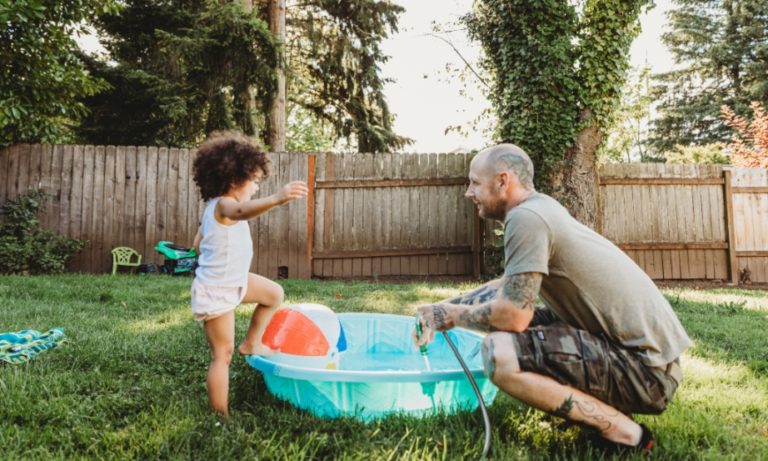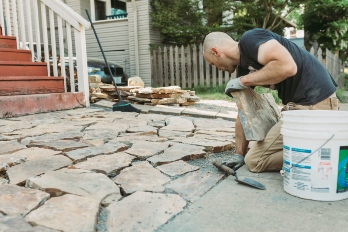What’s even better than a cold glass of lemonade on a flaming hot day? Air conditioning.
Here’s a quick rundown on how air conditioners work, the different types, and basic care. Plus, two ways to manage summer electric bills.
With a little regular attention, your AC will always be ready to beat the heat. And with the least amount of energy.
How your air conditioner works
AC works like your fridge. Which might not work as you think! Refrigerators don’t make cool air, per se. They move heat and humidity out of the box by circulating a chemical refrigerant through a series of coils.
What’s inside
While air conditioners have different setups, most of the parts are the same. Knowing them can help you with maintenance and troubleshooting.
- Air filter: Keeps airborne dust and allergens out of your home and the AC unit
- Refrigerant: Heat-transferring fluid
- Evaporator: The cold coil of indoor tubing where the refrigerant collects heat
- Condenser: The hot coil of outdoor tubing where the refrigerant releases heat
- Compressor: Pumps the refrigerant between evaporator and condenser
- Fans: Circulate air over the evaporator and the condenser
- Thermostat: Regulates the amount of cool air going into your home
- Drain hole or hose: Directs humidity outdoors after it condenses into water inside the system
Clean air filters are key
When its airflow is restricted, your air conditioner works harder. So clean or change the air filters regularly. It’s a simple way to prevent breakdowns, give the equipment a long life, and control your electric bill.
Energy tip: To lower AC costs, seal and insulate
When your home is air-sealed and insulated, it keeps out hot outdoor air. Your air conditioner has less work to do and uses less energy.
Window/room units
Your window unit might be installed in a window frame or in a space cut through an exterior wall.
Profile
- Efficiency: While less efficient than central air, window units let you cool just a room or two
- Lifespan: 10-15 years
- Replacement cost: $275-$1,500
Basic care
- Clean or replace air filters every 1-3 months
- Check window seals regularly; poor seals let warm air in
- Watch for water dripping into your home; many units need a slight tilt toward the outside
Energy tip: Stop window AC air leaks
Those flimsy accordion panels that come with window air conditioners don’t seal so well. Solution: duct-tape rigid panels between the unit and the window frame.
Central air
Central air conditioning cools your entire home. A single system sends cooled air through a network of ducts and vents.
You might have one big outdoor unit, called a “packaged” system. Or you might have a “split” system that divides the parts between an indoor and an outdoor unit.
Profile
- Efficiency: Better than window units, although you can’t cool just one room
- Lifespan: 10-15 years
- Replacement cost: $5,000-$12,500
Basic care
- Schedule an annual professional checkup
- Clean or replace air filters every 1-3 months; room vents might have filters too
- Keep plants trimmed to at least a foot away from the compressor, for airflow
- Watch for signs of water around the equipment; clogged drain hoses can cause leaks
Energy tip: To save on AC, use ceiling fans
When you use a ceiling fan, you can set the thermostat on your air conditioner about 4 degrees higher without feeling any difference.
Ductless mini splits
Mini splits typically have a single compressor outside. A large one might look like a central air unit. It’s linked to smaller indoor units, the air handlers. Most are wall mounted. These blow cool air directly into the house. No ductwork (usually).
Relatively easy to install, mini splits are sometimes used in additions.
Some systems can both cool and heat your home. That is, they can move heat either out of it or into it.
Profile
- Efficiency: Very good; there’s no energy loss to ductwork, and you can cool individual rooms
- Lifespan: 12-15 years
- Replacement cost: $4,000-$9,000 for heat pump and one air handler
Basic care
- Schedule an annual professional checkup
- Clean the filter in each air handler every 1-3 months
- Keep plants trimmed to at least a foot away from the compressor, for airflow
- Watch for signs of water around the equipment; clogged drain hoses can cause leaks
Tip: Do you have a “swamp cooler”?
In some dry regions, evaporative coolers are common. Super-efficient compared to standard AC, they cool by evaporating water into the air. They use a lot of water and need monthly maintenance.
Managing summer energy bills
When temperatures climb, so do electricity bills. Even if your energy use stays the same, your bill can swing up and down with electricity prices.
If you’d like more stability, ask your energy provider if they offer rate locks or “budget billing,” also called “balanced billing.”
With a rate lock, they agree to sell you electricity at a certain price for the entire year. That protects you from price increases. At the same time, you won’t benefit if prices go down.
With budget billing, they estimate your annual usage, divide it by 12, and bill you the same amount every month. No more summer spikes.
Replacement costs are based on ranges reported to HomeAdvisor by homeowners nationwide.




